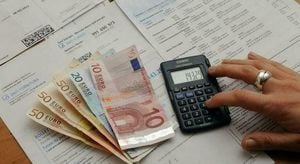April 1st marks a day celebrated around the globe as April Fool's Day, a time when humor reigns supreme, and pranks are the order of the day. This tradition, rich in history and cultural significance, has evolved into a worldwide phenomenon where people indulge in lighthearted tricks and playful deceptions.
The origins of April Fool's Day are shrouded in mystery, with several theories attempting to explain its inception. One popular theory links the day to the celebrations of the vernal equinox, a time when nature plays tricks with unpredictable weather. Another theory suggests that the custom originated in ancient Rome, associated with the worship of the god of laughter, Gelos, in Greek mythology. Regardless of its beginnings, the day has transformed into a global event filled with laughter and creativity.
In Europe, the transition from the Julian calendar to the Gregorian calendar in the 16th century played a significant role in the establishment of April Fool's Day. When King Charles IX of France declared January 1st as the official New Year in 1564, those who continued to celebrate the New Year on April 1st became the butt of jokes. This led to the tradition of playing pranks on the unsuspecting, marking the day as one of merriment.
In Russia, the celebration of April Fool's Day took root under the reign of Peter I, who was known for his affinity for European customs. The first recorded mass prank in Russia occurred in 1703 when townspeople were lured to a nonexistent German theater performance, only to find a sign that read, "April 1st – believe no one!" This phrase has since become a hallmark of Russian April Fool's humor.
As the tradition spread, it took on unique characteristics in various countries. In Germany, for instance, pranks are typically limited to the morning hours, and those who continue to joke after noon risk being labeled an "April fool" (Aprilnarr). Bavarian traditions include sending people on absurd errands, such as fetching "pigeon milk" or "mosquito fat." Meanwhile, in East Germany, April Fool's jokes often served as veiled political critiques.
In contrast, the Russian approach to April Fool's Day embraces a more freewheeling spirit. The day is marked by a variety of jokes and pranks that often reflect social issues. For example, in 1988, a popular television program reported the sudden legalization of currency trading, causing widespread panic among viewers. The tradition of humor as a coping mechanism continued into the 1990s, with jokes about economic prosperity serving as a form of therapy during difficult times.
Modern-day pranks have also transitioned into the digital realm, with social media platforms becoming a breeding ground for creativity. In recent years, major media outlets such as ARD in Germany have adopted the practice of including a fake news story in their broadcasts on April 1st, blurring the lines between reality and fiction. This year's memorable prank involved a seemingly credible study published in a major magazine, claiming that the color of a suit influences negotiation success, leaving many business professionals scrambling to update their wardrobes.
April Fool's Day is not without its pitfalls, however. The article emphasizes the importance of ensuring that jokes do not cause discomfort or touch on sensitive topics such as race, age, or personal circumstances. The goal is to foster joy rather than offense. Popular pranks that may have been amusing in the past, such as attaching paper fish to someone's back, have become stale and are often discouraged in favor of more original ideas.
In the United States, the day is also known as All Fool's Day, with traditions that include lighthearted pranks and humorous announcements. American media often get in on the fun, publishing outlandish stories that capture the public's imagination. For example, in 1957, the BBC aired a now-legendary report about spaghetti being harvested from trees in Switzerland, prompting viewers to inquire about how they could grow their own spaghetti trees.
In Scotland, April 1st is celebrated as Gowk Day, followed by Taily Day, where pranks take on a cheekier tone. In Finland, the tradition involves giving friends absurd tasks, harking back to an old custom where children were sent to ask neighbors for non-existent items during planting season.
As the day evolves, so too do the methods of humor. Social media has breathed new life into the tradition, allowing pranks to spread rapidly across the globe. Companies often seize the opportunity to launch outrageous products or services, capturing the essence of the day in a modern context.
Ultimately, April Fool's Day serves as a reminder of the importance of laughter and levity in our lives. Mark Twain once noted, "This is the day upon which we are reminded of what we are on the other 364 days." As we navigate the complexities of modern life, the ability to share a laugh can be a powerful antidote to stress and uncertainty. The future of April Fool's Day is likely to bring new formats and ethical considerations, ensuring that humor continues to play a vital role in our interactions.
As we celebrate this unique day, it is essential to approach humor with thoughtfulness and creativity. Whether through clever pranks, witty greetings, or simply sharing a laugh with friends and family, April Fool's Day remains a cherished occasion that transcends borders and cultures.








